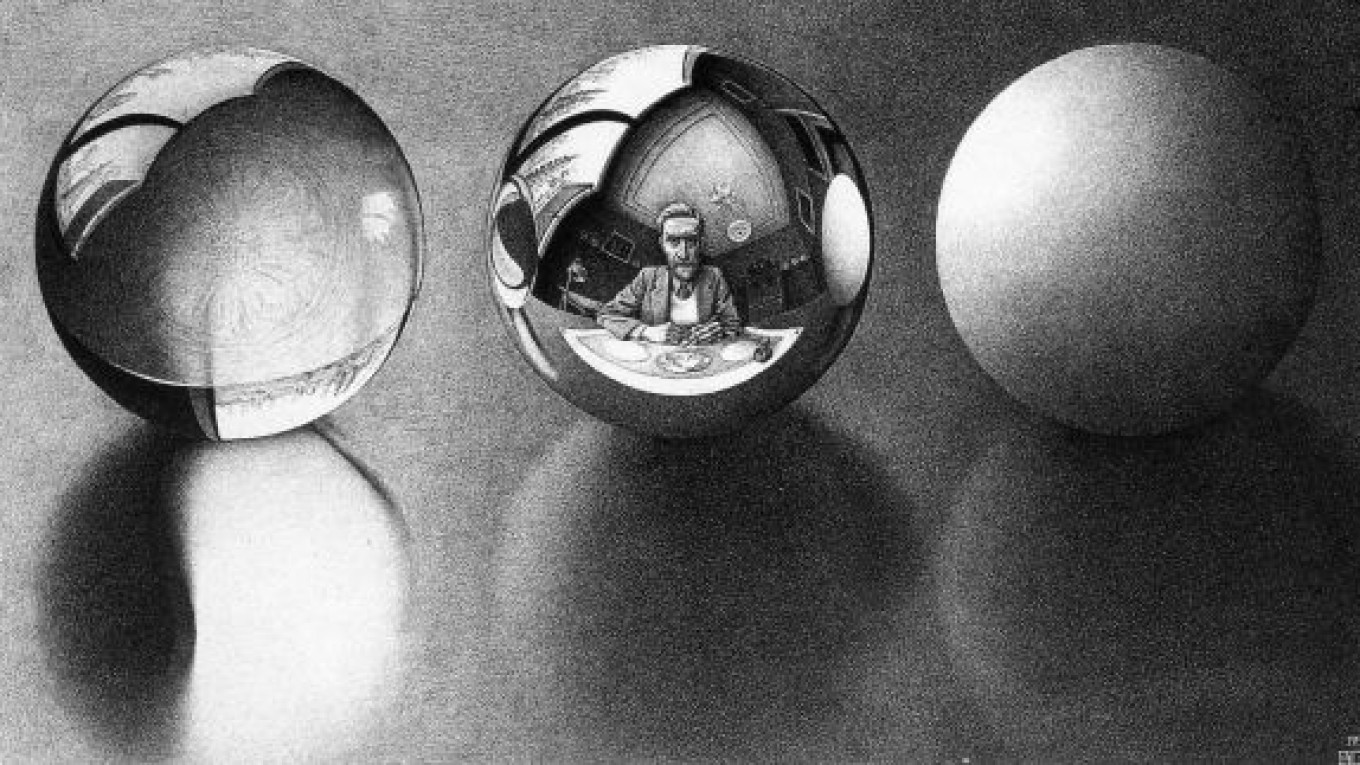Maunts Cornelis Escher, the Dutch designer commonly known as M.C. Escher, achieved fame in the mid-20th century for drawings, woodcuts and lithographs that required viewers to shift their gazes in order to see two stories within one picture.
Like one of his designs, a new exhibition at the Moscow Museum of Modern Art on Petrovka aims to show a different perspective on the artist's work from the puzzle-like designs that brought him to prominence.
The exhibit, which began last week and continues until February, is part of the Netherlands-Russia bilateral year, but its foreign focus is placed more on the mountains of Italy than the Low Countries. While the show includes plenty of Escher tessellations where replicated horsemen fit together into a pattern, it also has seascapes and rural scenes from the artist's time on the Italian coast.
The earlier works — before Escher became obsessed with geometric designs after seeing Islamic architecture like the Alhambra in Spain — still retain the artist's black-and-white, sketchy style but are of different subjects. A series of woodcuts called "Nocturnal Rome" show the monuments of Escher's adopted home before the rise of fascism led him to abandon the country, and the stones of crumbling seaside towns seem to be the inspiration for later experiments, such as pictures of connecting staircases that feed endlessly into one another.
While the artist's work is known for being as hard to fathom as a MЪbius strip, one of the rooms in the winding exhibition shows a video that attempts to explain Escher's life. If museum-goers have time to collapse on a bean bag for an hour and watch it, the film, "Metamorphoses" by Jan Bosdriesz, shows how the designer's art changed from his boyhood days to the combination of two- and three-dimensional images that see figures come alive off of the page.
Escher is joined by a more contemporary Dutch designer, Jan van Toorn, and his exhibition on the third floor, "Dialogue With the Public." While Escher's drawings may be dizzying in their twisting staircases and strange perspectives, the physical appearance of van Toorn's work seems to be more straightforward, showing posters for museum shows or stamps of political figures that are striking but not overly complex. However, true to van Toorn's background as a curator and theorist, he says that he is a "visual journalist" and likes to focus less on creating captivating Escher-like designs and more on the poster's "semantic contents."
Work by Escher and van Toorn will be on display until Feb. 9 at the Moscow Museum of Modern Art, 25 Petrovka. Metro Chekhovskaya.
Contact the author at [email protected]
A Message from The Moscow Times:
Dear readers,
We are facing unprecedented challenges. Russia's Prosecutor General's Office has designated The Moscow Times as an "undesirable" organization, criminalizing our work and putting our staff at risk of prosecution. This follows our earlier unjust labeling as a "foreign agent."
These actions are direct attempts to silence independent journalism in Russia. The authorities claim our work "discredits the decisions of the Russian leadership." We see things differently: we strive to provide accurate, unbiased reporting on Russia.
We, the journalists of The Moscow Times, refuse to be silenced. But to continue our work, we need your help.
Your support, no matter how small, makes a world of difference. If you can, please support us monthly starting from just $2. It's quick to set up, and every contribution makes a significant impact.
By supporting The Moscow Times, you're defending open, independent journalism in the face of repression. Thank you for standing with us.
Remind me later.






